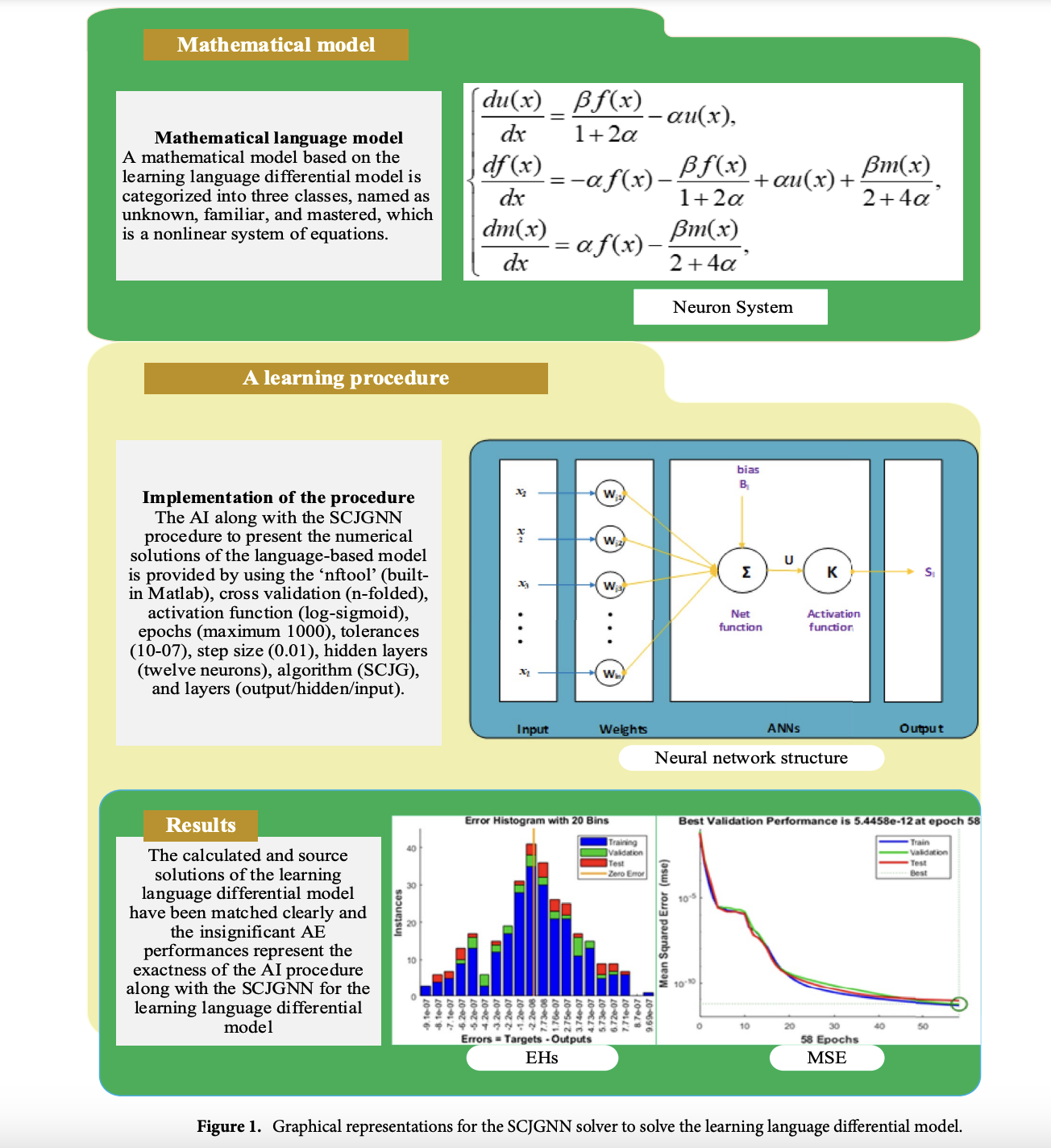Researchers from Lebanese American University and United Arab Emirates University have collaborated to employ artificial intelligence (AI) successfully through the Scale Conjugate Gradient Neural Network (SCJGNN), providing numerical solutions for the language-based learning model. This deep learning study categorizes the language differential model into three classes: unknown, familiar, and mastered, representing varying degrees of language proficiency. Utilizing the Adam scheme for dataset generation and the SCJGNN optimization method, the AI procedure achieves accurate results with a small calculated absolute error ranging from 10–06 to 10–08 for each model class.
The study highlights the application of AI in language models, emphasizing the significance of language models in enabling machines to understand and generate human language. Language models, a type of machine learning, recognize patterns in language usage, enabling them to perform various language processing tasks such as text categorization, sentiment analysis, chatbot generation, translation, and summarization. The computational framework of the AI, along with SCJGNN, is detailed in two steps, addressing aspects such as problem description, data preprocessing, architecture design, weight initialization, activation functions, loss functions, optimization, training, and evaluation. The robustness of the SCJGNN scheme is emphasized, particularly in handling large-scale problems and diverse input data forms.
The AI-based SCJGNN procedure incorporates a log-sigmoid activation function, twelve neurons, SCJG optimization, and hidden and output layers. The convergence of results and minimal absolute error confirms the model’s accuracy, emphasizing its precision in solving the language learning model. Numerical results of the language model demonstrate the effectiveness of the AI-based SCJGNN in solving the learning language differential model. Evaluation metrics validate the model’s precision and convergence, including Mean Squared Error (MSE), state of transition (SoT), error histograms, and correlation graphs. The absolute error measures for each class of the language model confirm the accuracy of the AI procedure along with SCJGNN.
In conclusion, the research successfully applies AI through the SCJGNN solver to solve the language-based learning model numerically. The accuracy, convergence, and minimal absolute error achieved underscore the proposed methodology’s effectiveness. The study contributes to the broader understanding of employing AI in language models and its applications in solving differential models in language learning progression.
Check out the Paper. All credit for this research goes to the researchers of this project. Also, don’t forget to join our 34k+ ML SubReddit, 41k+ Facebook Community, Discord Channel, and Email Newsletter, where we share the latest AI research news, cool AI projects, and more.
If you like our work, you will love our newsletter..
Pragati Jhunjhunwala is a consulting intern at MarktechPost. She is currently pursuing her B.Tech from the Indian Institute of Technology(IIT), Kharagpur. She is a tech enthusiast and has a keen interest in the scope of software and data science applications. She is always reading about the developments in different field of AI and ML.


